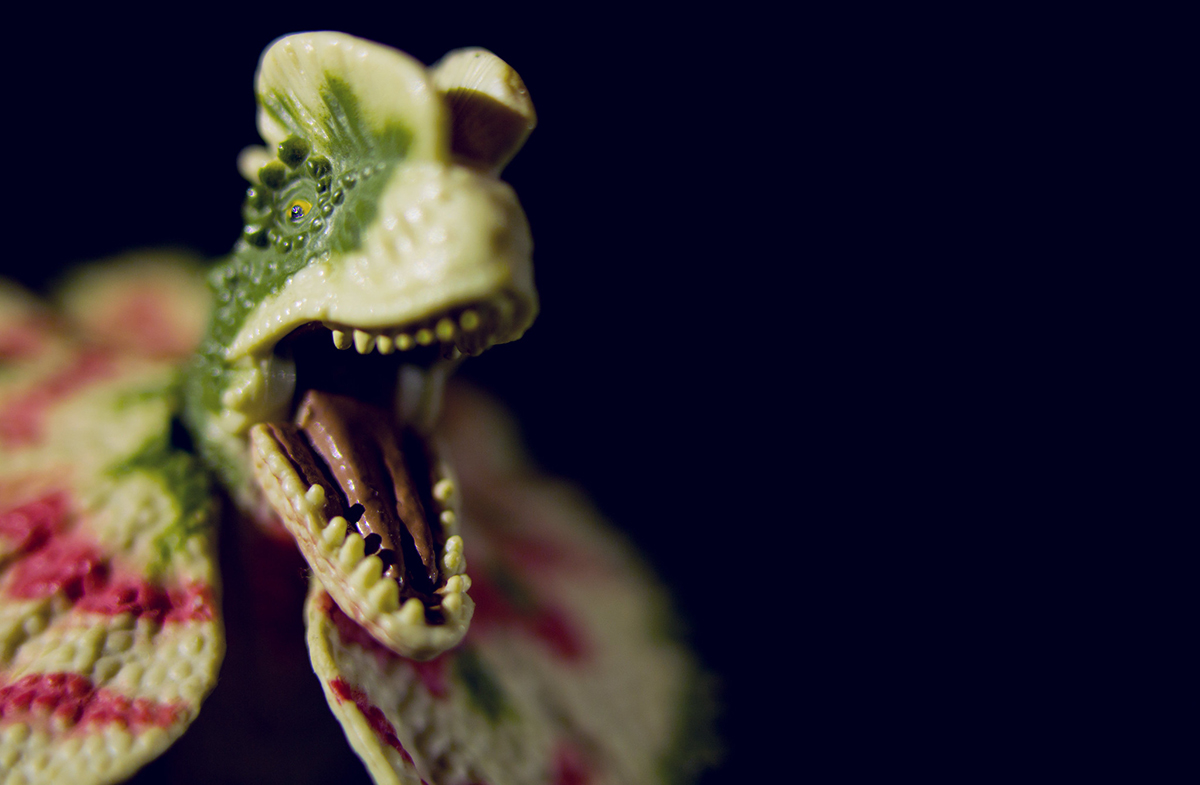
The Dilophosaurus is undoubtedly one of the most popular dinosaurs today, thanks to its appearance in the first film of the "Jurassic Park" trilogy in 1993. It lived in the early Jurassic in present-day North America. Its name means "two-crested lizard". Like other theropods, it was characterized by having 3 claws on its extremities and having hollow bones.
In 1954 the first specimens of this animal were described. However, it was not assigned his name until a decade later. Although Dilophosaurus is one of the oldest known Jurassic theropods, it is also one of the least understood today. Today It is considered to be a genus belonging to the family Dilophosauridae.
Description of the Dilophosaurus
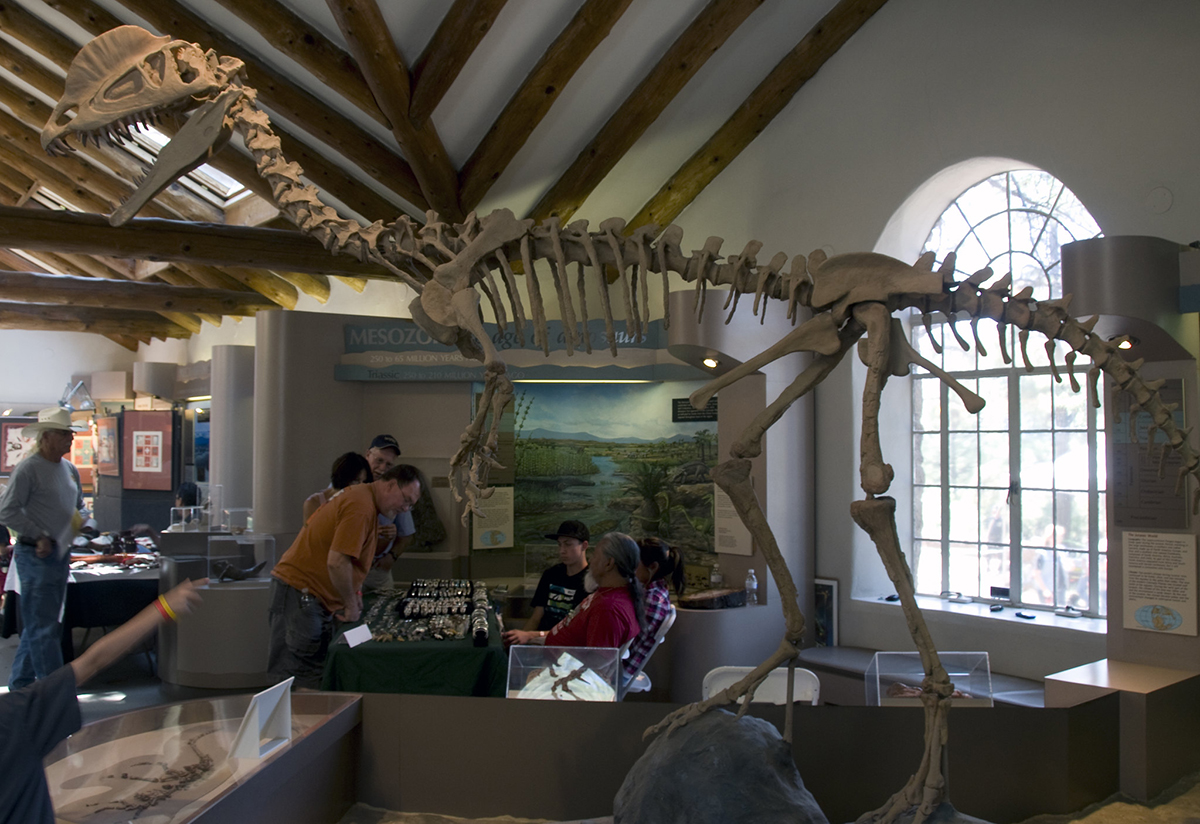
This bipedal carnivore could measure 7 meters long, 3 meters high and weigh 400 kilos. For this reason it becomes one of the first large predators, even though it is smaller than other theropods after it. He had a slim, light build and his skull was relatively large in proportion to his body. Its muzzle was narrow and had a gap for the nose in the upper jaw. However, What stood out the most about this reptile were its two longitudinal crests that were on its head. Currently, their function is still unknown. Dilophosaurus teeth were curved and long.
It is speculated that this bipedal predator may have hunted large animals, as well as fish and smaller animals. Also, it is possible that he had a rapid growth. It is estimated that it could grow up to 35 centimeters each year in the early stages of his life.
ridges
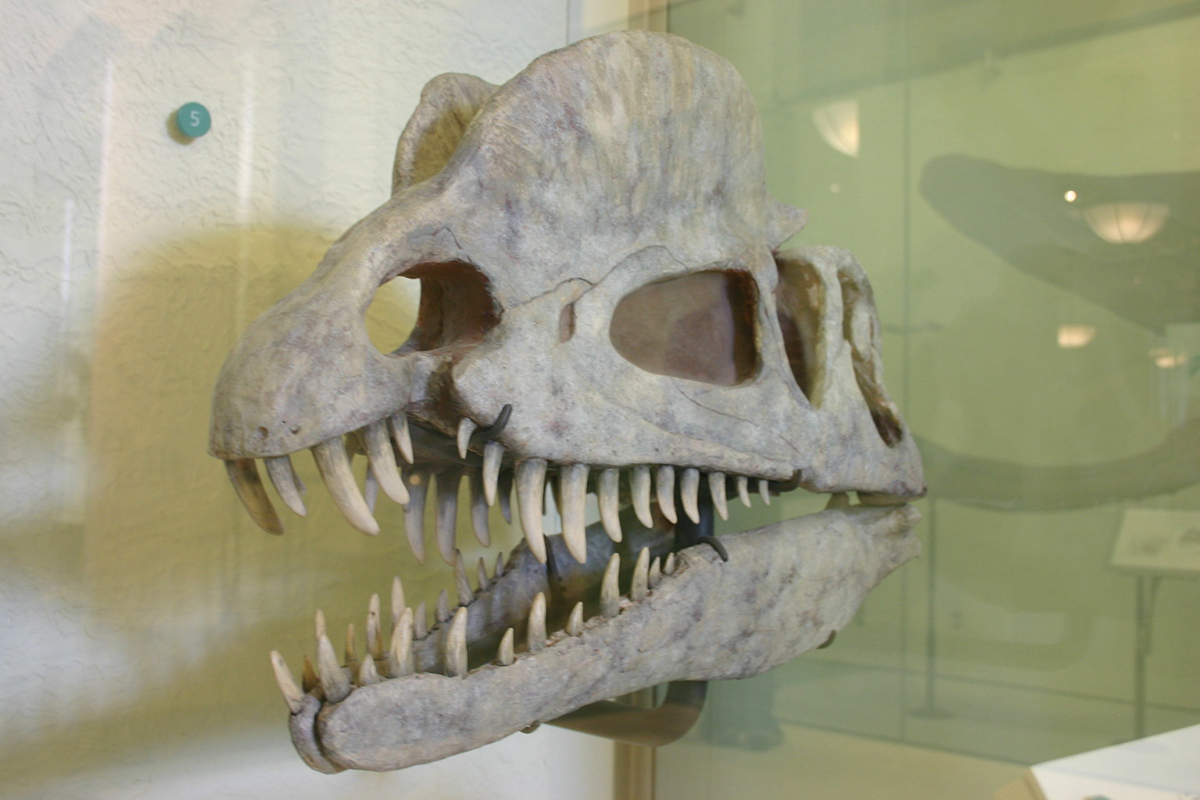
It is much disputed what was the real function of the crests of the Dilophosaurus. Possible functions include thermoregulation, but this theory is taken with a grain of salt as the cristae had no grooves for vascularization. Another possibility would be its use in sexual displays., in such a case it could be thought that the Dilophosaurus lived in groups. That they could be used in fights is ruled out due to their fragility.
In the year 2011, two American paleontologists named Kevin Padian and John R. Horner proposed a new theory. According to them, all the "strange structures" such as crests, horns, domes, and frills that were manifested in dinosaurs They were used to separate the different species., since there is no scientific evidence to confirm other functionality. Paleontologists Rob J. Knell and Scott D. Sampson responded to this theory in the same year. They argued that this theory is very likely as a secondary function of these ornaments. However, they see its use related to sexual selection as more likely, since it entailed a very high cost to develop such structures. Furthermore, they varied greatly within the same species.
Dilophosaurus Diet
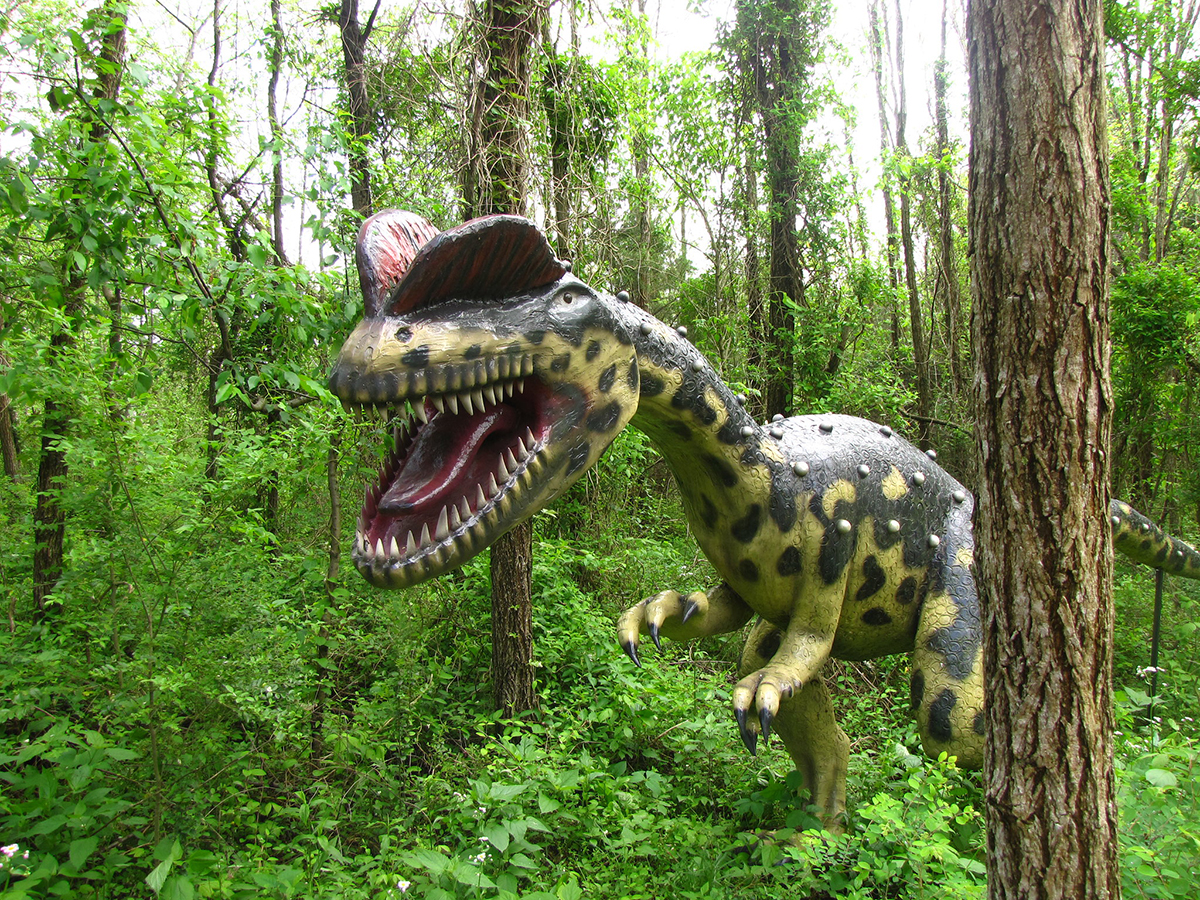
To this day it is not known exactly what the diet of the Dilophosaurus was. The world of paleontology is divided between different theories regarding the feeding of this dinosaur.
The American paleontologist Samuel P. Welles was convinced that this carnivore was a scavenger. He pointed out that the subnarial gap was responsible for this dinosaur's bite not being very powerful. Furthermore, Welles found nothing to indicate that the Dilophosaurus skull possessed cranial kinesis. This feature makes it possible for the movements of the loose bones of the skull to be related to each other. Therefore, this paleontologist thought that the Dilophosaurus used its teeth to tear and pierce, and not to bite. He was of the opinion that if he really attacked other animals, he could only do it with his claws.
In the year 1986, another American paleontologist named Robert T. Bakker stated that the Dilophosaurus was adapted to hunt large animals and that it was strong enough to cope with herbivores from the Lower Jurassic. Two years later, Welles dismissed his initial scavenger theory, explaining that this carnivore's snout was better adapted to hunting than he had previously come to think. Furthermore, its teeth turned out to be more deadly than its claws. He also speculates that he could have bounced off his tail, as modern kangaroos do, while attacking its prey.
[related url=»https://infoanimales.net/dinosaurs/spinosaurus/»]
Was the Dilophosaurus perhaps a fish eater?
The most recent theory speculates that Dilophosaurus may have fed on fish. In 2007, Milner and James I. Kirkland noted that the ends of this dinosaur's jaws formed a rosette of interlocking teeth as they expanded to the sides. This characteristic can also be observed in other fish-eating species, such as spinosaurids or gharials. In addition, it had retracted nose openings which could have been helpful in keeping too much water out of the nostrils while fishing. Finally, it remains to be noted that, like the Spinosaurus, it had arms and claws long enough to fish for its food.
Curiosities
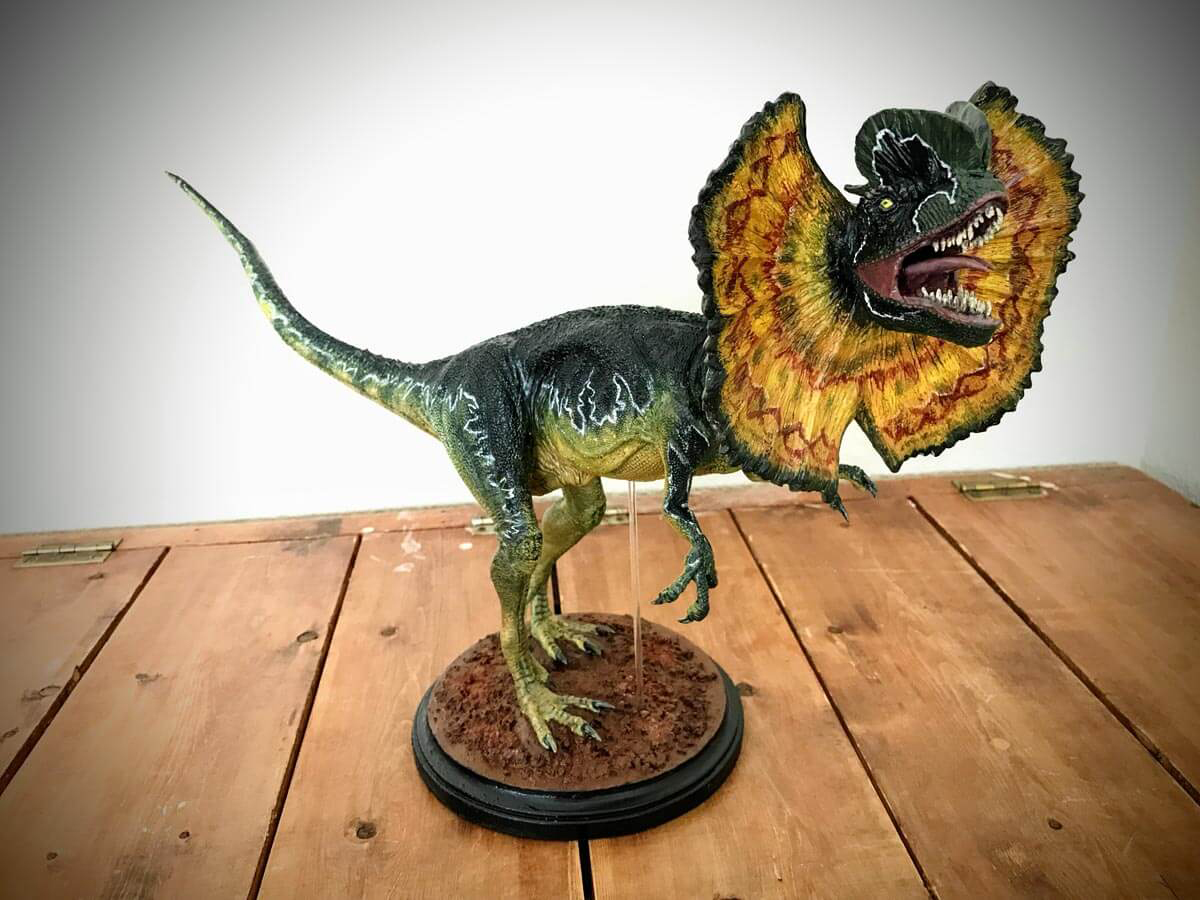
During an excavation carried out in 1966 in Rocky Hill, in the United States, for the construction of Interstate 91, footprints of a dinosaur similar to Dilophosaurus were found. Therefore, this carnivore was chosen as the state dinosaur of Connecticut in the year 2017. It was found that the place of discovery of said footprints had been a Triassic lake. Because of this it was decided to move the road and a park called “Dinosaur State Park” was created. In 1981, the first life-size reconstruction of a Dilophosaurus was donated to this park. This animal had initially been proposed as the state dinosaur of Arizona in 1998. However, this request was denied as Dilophosaurus was not unique to that area, and the honor was given to Sonorasaurus.
From fossil to Hollywood star
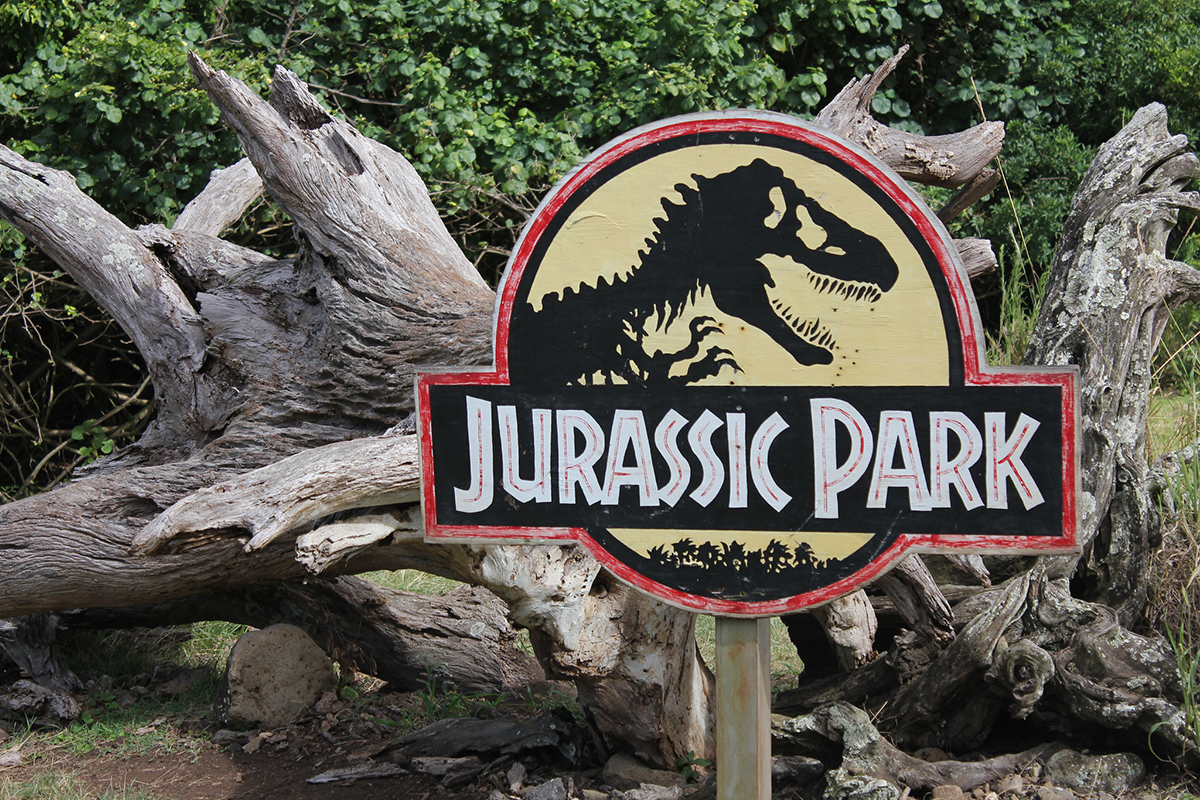
All dinosaur fans have heard of the famous Dilophosaurus. This one has its star moment in the first franchise film "Jurassic Park" directed by Steven Spielberg, as well as in the book written by Michael Crichton. In this film, the predator attacks a park employee who is trying to flee with stolen DNA samples during a devastating storm. The Dilophosaurus, as an offensive display, deploys a retractable neck membrane and spits venom into its victim's eyes, just like some modern snakes do. After blinding the poor man, it pounces on him and devours him. Unfortunately, these two features have been one of many Hollywood inventions. There is no scientific evidence to show that Dilophosaurus had a retractable membrane or that it could spit venom.
Also, in "Jurassic Park" the Dilophosaurus is smaller than the Velociraptor depicted in the film, which is actually based on Deinonychus. However, the Dilophosaurus was twice as big, as we have discussed above. This makes this famous predator the most "fictionalized" dinosaur in the franchise.
[related url=»https://infoanimales.net/dinosaurs/deinonychus/»]
With the fame of the trilogy, many derived products also arrived, such as toys and video games, in which this popular Jurassic predator cannot be missing.